Art World
‘We Haven’t Even Scratched the Surface:’ Design Duo Studio Drift on Breaking Boundaries in Art and Technology
The Dutch art and design duo currently has a show on view at the Stedelijk Museum in Amsterdam.
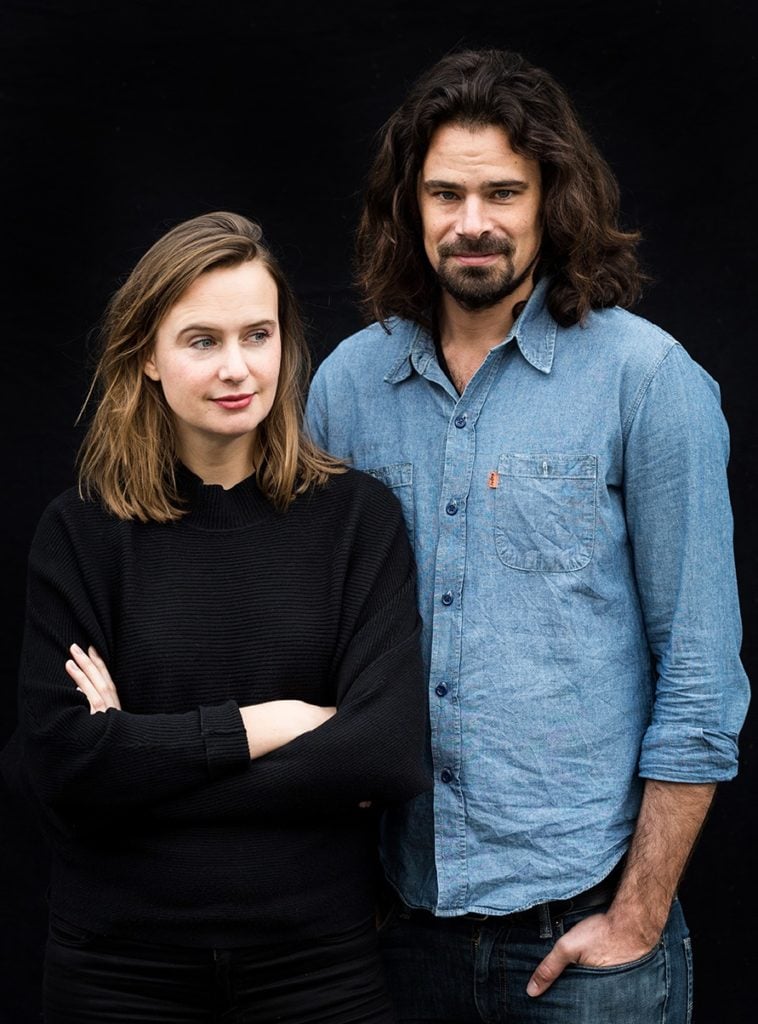
The Dutch art and design duo currently has a show on view at the Stedelijk Museum in Amsterdam.

Eileen Kinsella

Lonneke Gordjin and Ralph Nauta—the Dutch duo who work under the name Studio Drift—are known for mind-bending works that fuse art, design, science, and technology. Their work also often incorporates the viewer. Fairgoers at the most recent edition of Art Basel in Miami Beach, for instance, were wowed by Franchise Freedom, an airborne sculpture that involved a pack of drones that soared and dipped in dramatically choreographed patterns that mimicked the way flocks of birds fly. The work, created in partnership with BMW, debuted at nighttime to maximize its luminous effect.
Meanwhile, at the 2017 Armory Show in New York, one of the most buzzed-about highlights was Studio Drift’s massive concrete cube, titled Drifter. It appears to defy gravity as it tilts and swivels in the air with its suspension mechanisms hidden from view.
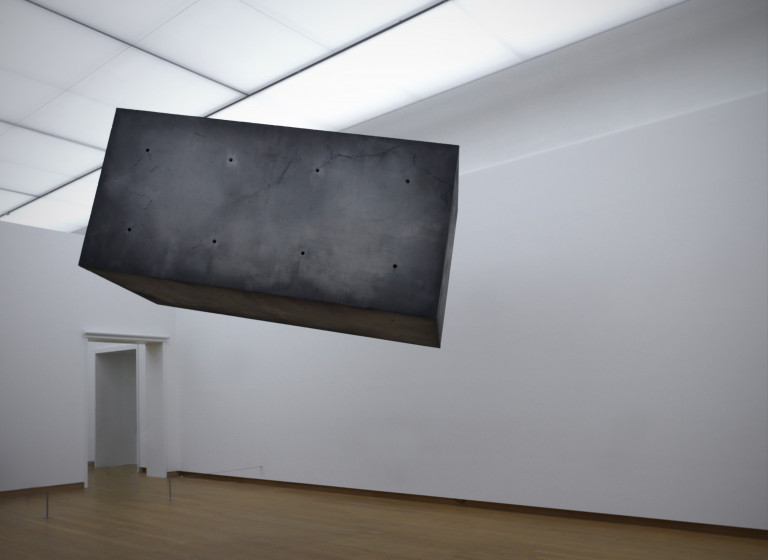
Installation view of “Studio Drift: Coded Nature” at the Stedelijk Museum. Drifter, development 2008-16, realization 2017. Courtesy of Pace Gallery, New York. Photo: Gert Jan van Rooij.
Not surprisingly, given the scale and complexity of their works, it is rare to catch more than one Studio Drift installation at once. But the Stedelijk Museum in Amsterdam has tackled that issue with its current show, the ambitious “Studio Drift: Coded Nature,” which marks the duo’s solo museum debut (through August 26). The exhibition features eight room-filling installations and accompanying films, and includes both early designs and new, never-before-seen works.
We caught up with Gordijn and Nauta to talk about what inspires them, how they collaborate, and the exhaustive preparations that went into the show at the Stedelijk.
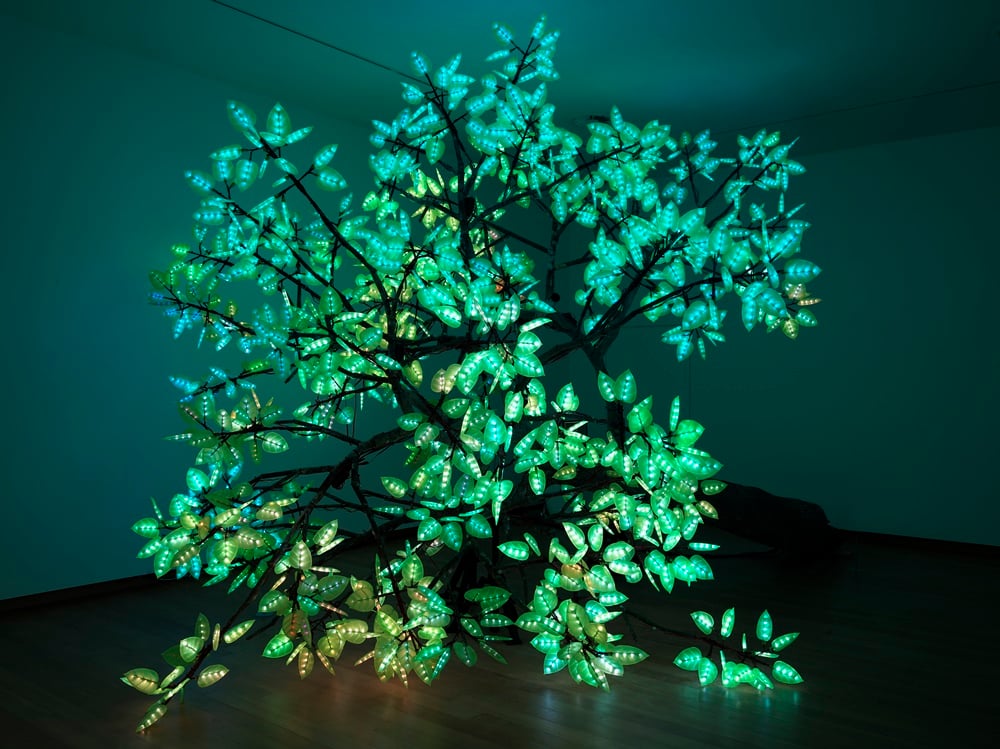
Installation view of “Studio Drift: Coded Nature” at the Stedelijk Museum Amsterdam. Gazm and Studio Drift, branch of Tree of Ténéré, prototype 2017, Collection GAZM, courtesy of Pace Gallery, New York. Photo: Gert Jan van Rooij.
How did you first meet and when did you start working together?
Lonneke Gordjin: We met in 1999—last century—in the first year of our studies at the Design Academy [in Eindhoven, Netherlands] and became friends. We knew [and dated] each other for six years. We never actually decided to work together but after graduation we started to gradually help each other out and realized each other’s complementary qualities. In the course of those years, we developed our language together.
In what ways are your skills complementary?
LG: In the beginning, we thought we were very similar—almost as if we were thinking like one person. But after working intensely together on some projects we actually realized we much different than we initially thought.
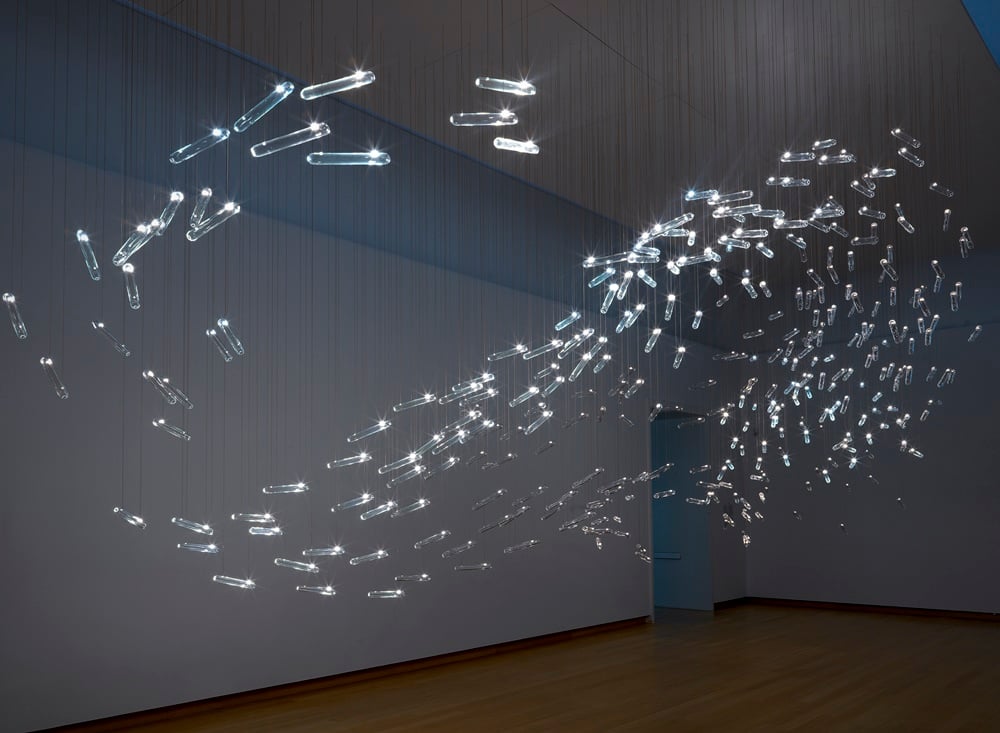
Installation view of “Studio Drift: Coded Nature” at the Stedelijk Museum. Flylight (2009).
Courtesy of Carpenters Workshop Gallery, London. Photo: Gert Jan van Rooij.
How so?
LG: Well, if it wasn’t for Ralph’s persistence, the drones project in Miami last year never would have happened. It took such a long time to get it done. I would have let it go and moved on to the next project. So I think we have different energies, we peak at different moments, and it only comes together when we don’t argue. That’s where our work is.
Where does that persistence come from?
Ralph Nauta: There are, of course, many examples of humans making the impossible possible. Take Elon Musk with his SpaceX—that’s insane. I’m always thinking: “Why can’t we do that?” In a lot of these cases, it’s persistence that makes stuff happen. Time and again, you just want to keep every spark of hope alive and nurse it, wait for the right moment so you can work with the right partners and have the right conversations. I always focus on the small chance that something can happen. You can look for an opening—a little gap—and once you see it you jump into it. I come in with a crowbar and I break it open.
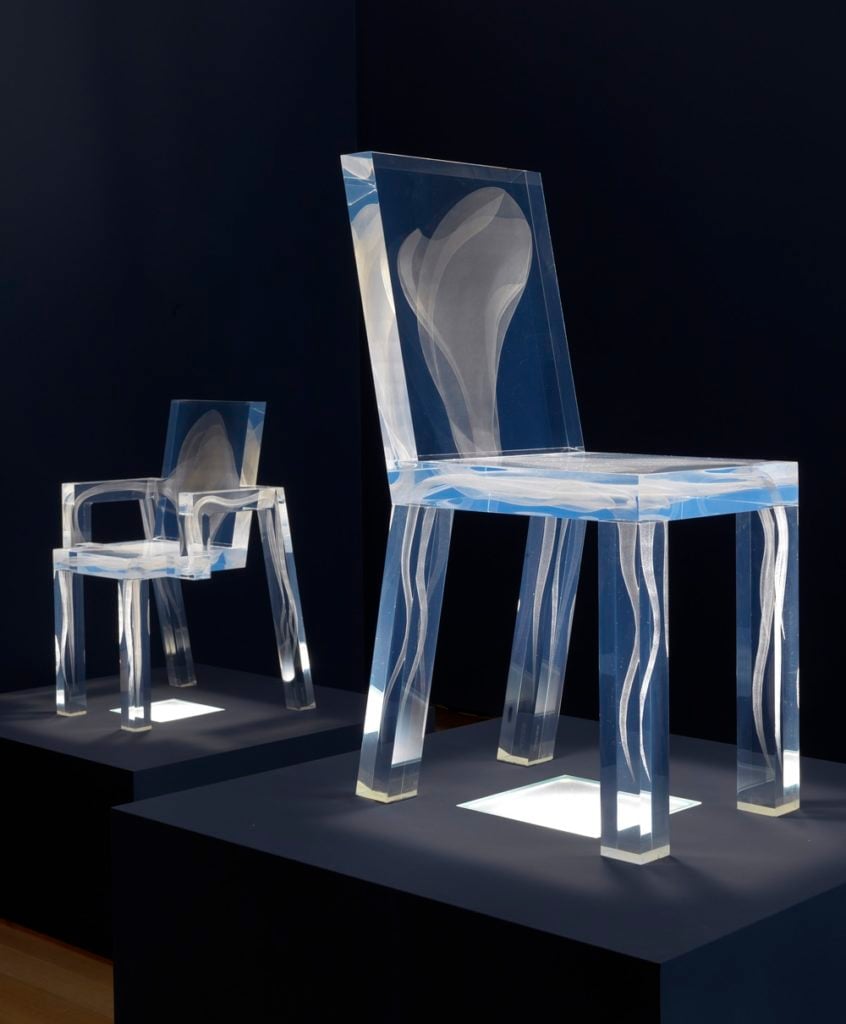
Installation view of “Studio Drift: Coded Nature” at the Stedelijk Museum. King Chair (left) and Chair, Ghost Collection (2008). Collection Studio Drift, Amsterdam. Photo: Gert Jan van Rooij.
What did preparations for the Stedelijk show involve?
LG: It was really a short preparation. We had two and a half months [before installation] and that was the biggest challenge. But we’ve been able to be very flexible. For the last two weeks, we’ve been in the museum nonstop to set everything up. It’s quiet and very nice to work there. Now we’re sitting in our studio and it feels kind of weird because it’s completely empty. Everything is gone now, it’s almost like our entire studio has moved.
RN: It kind of helps that time is short because you have to make rapid decisions. We developed this shelving system in our studio that improves efficiency and that’s also gone to the museums. Everything is now on the floor here and spread out. The show, which takes up 16 rooms, is the most elaborate one that we’ve done so far. Installing the works in a museum gallery opens up different possibilities. It’s another way of thinking.
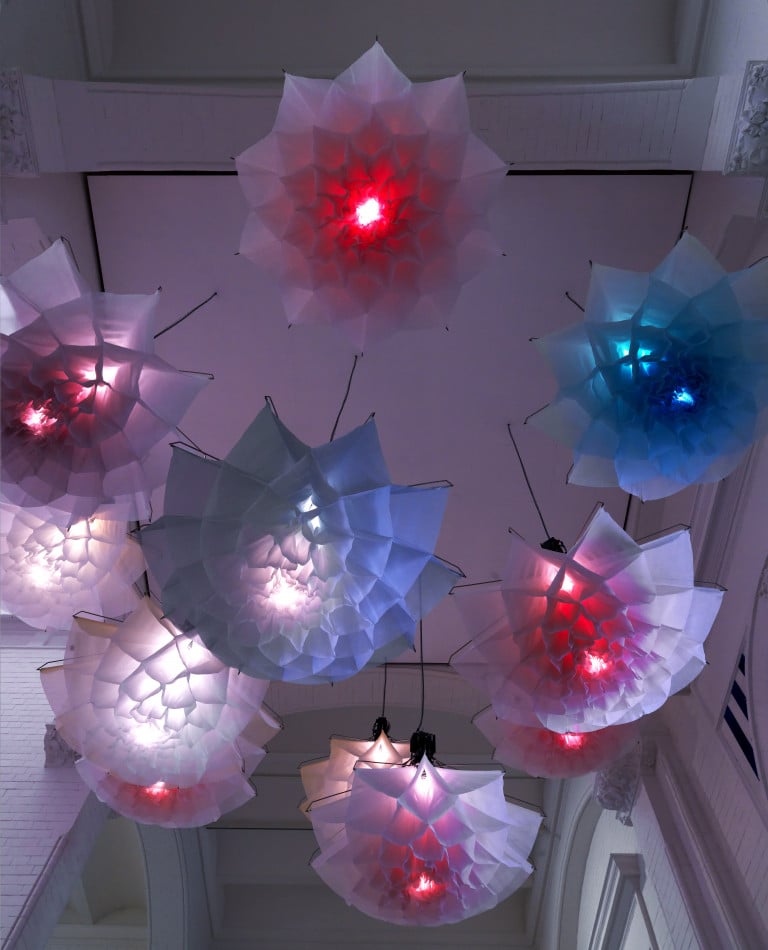
Installation view of “Studio Drift: Coded Nature” at the Stedelijk Museum. Meadow (2017, choreographed in 2018). Collection Studio Drift, Amsterdam, courtesy of collection DELA, Eindhoven. Photo: Gert Jan van Rooij.
Tell us about the new works on view in the Stedelijk show?
LG: In addition to Drifters, a 12-minute film shot in the Scottish Highlands that delves into questions about the individual versus the group, we rushed to finish the first version of a work called Materialsm. For that we take apart objects from our daily lives and decompose them until they go back to their original elements. For example, we took apart a small thing, a pencil. How much wood is in a pencil? How much paint? How much graphite? It suddenly makes the world around you very different. You start looking at the world in elements and materials and wondering where it all comes from. Is it taken out of the earth? You start thinking about the amount of labor required and the physicality of it. It’s very strange what it does to you. We’ve taken apart a bicycle, a vacuum cleaner, a VW Beetle, a bottle of water, all sort of things.
Your practice is very multidisciplinary but two years ago you started working with Pace, a traditional fine art gallery. Tell us about that.
RN: We actively searched for opportunities so that our work would be presented in the right context. Pace Gallery recently started a new program called Pace Art + Technology. We’ve never seen ourselves fit neatly into one category, like “designers” or “architects.” We have a contemporary design background and education but we’ve always just done what we want to do. The Pace program fits perfectly with ours. They’re pushing boundaries, so they’re a great partner to work with. They’re not playing it safe, they really do what they believe in and they’re not just looking at what the market wants.
LG: So far it’s working really well with Pace. It also opens doors for us and gives us a platform that we didn’t have before. That’s very valuable to us. Thinking about how we could develop and find the right way to show our work. For example, it’s really hard to create certain opportunities on our own, like for Franchise Freedom, the drone work in Miami.
What can we expect next?
LG: We have plenty of ideas that need to be explored. With Materialsm the kickoff is in the museum. we haven’t even scratched the surface of what is possible. We’ll definitely venture out further on this one. We have big plans with that project.